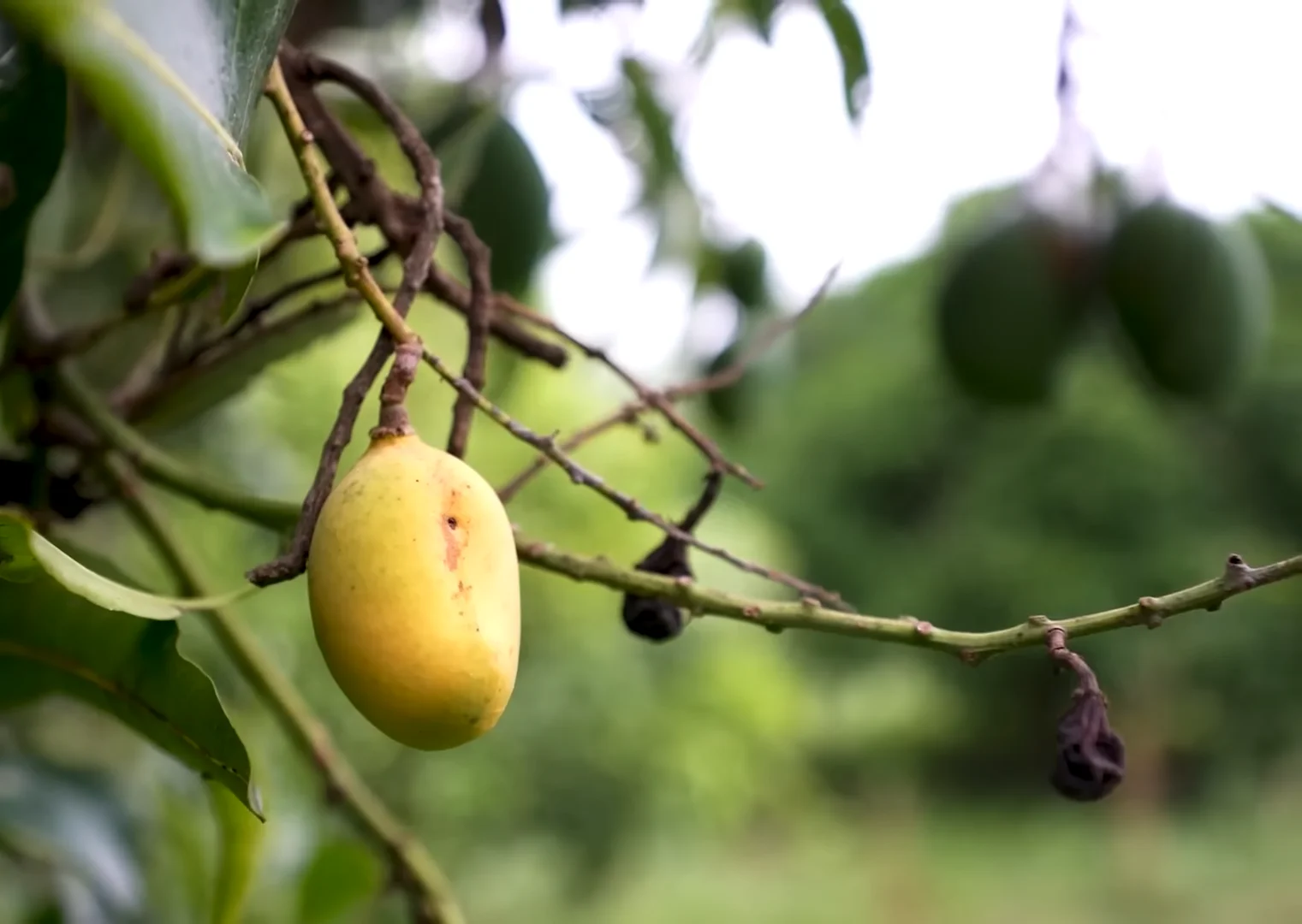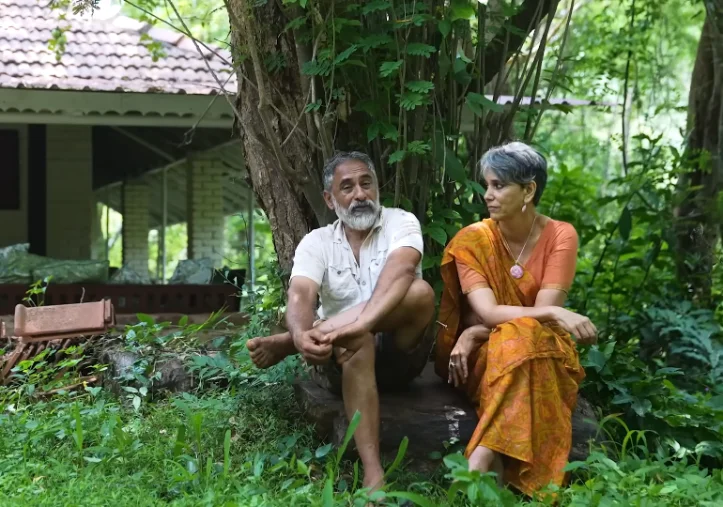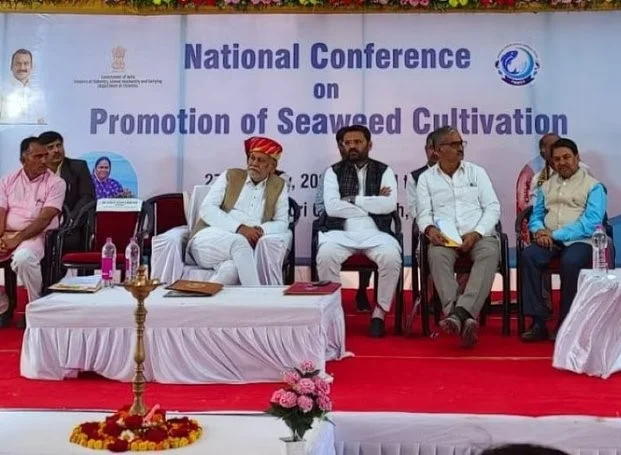Julie and Vivek, a couple with a shared dream, embarked on a unique journey that began when they met in college. The backdrop was a time of significant social upheaval in Delhi, marked by the assassination of Mrs. Gandhi. Witnessing the breakdown in society during that period, they felt compelled to break away from the city life.
Reflecting on that pivotal moment, Julie explains, “If we didn’t leave Delhi at that point, we probably would get sucked into the system.” Despite being two young individuals with a big dream, Vivek wholeheartedly supported Julie in turning that dream into reality. They serendipitously stumbled upon a beautiful piece of land that would become the foundation of their aspirations.

In the year 1985, well before the terms “organic farming” and “sustainable living” became mainstream, Julie and Vivek made a bold decision. They decided to leave behind their metro life and head to HD Kote, a remote area 50 kilometers south of Mysore, surrounded by tribal settlements. Their goal was to create their own little world, giving birth to what is now known as Krack-a-Dawna.
Vivek vividly recalls their early days at Krack-a-Dawna, saying, “When we came here, it was after a year of drought. The river you see there, now full, was just a trickle that you could jump over. The roads were in bad shape, with only three or four buses available, and there was no healthcare nearby. You had to go to town. No phones, no power, but we had each other and an open mind. So, we learned, and the soil taught us.”
Also Read: In India, Alternative Farming Supports Migrants in Rebuilding Lives in Rural Areas

Despite having a broad idea of what they wanted for their farm, Julie and Vivek faced a lack of knowledge on how to proceed. With no references or examples from India to rely upon, they tackled the challenges head-on. The couple strategically divided the land based on soil types and the gradient of the terrain. The eastern part was earmarked for horticulture, while the western region was dedicated to food crops. The hilly terrain was left untouched, allowing it to regenerate and become a haven for birds and animals.
Vivek fondly recounts, “The initial tree we planted stands tall behind the house – the banyan tree. Over the years, it has grown into a massive, majestic presence. Following that, we planted coconut trees, and our first crop included cowpea, watermelon, and bananas.”

Reflecting on those early days, Julie shares, “For me, it was all about the first vegetables. We were novices when it came to sowing seeds – we probably put them in too thick. But those baby carrots we harvested were the most divine food I had ever tasted. I could simply pick them up, no need to wash, and enjoy them straight from the ground. It was truly magical.”
The initial days posed challenges for the couple as their crops faced attacks from insects and pests. Undeterred, Vivek and Julie remained resilient. Seeking solutions without resorting to chemical pesticides, they turned to the local community’s agricultural wisdom for creative approaches.

Vivek explains, “Even a hardy millet crop like ragi faced issues with aphids and sucking pests. Our solution at that time was to cook white rice the night before and turn it into curd rice. Early morning, we would spread it in the fields. It was a local tradition to do so in one rain in the ragi field. Observing the results, given our location in a valley by the riverside with abundant bird life, we noticed that birds came to eat the rice and, in turn, started consuming the pests, bugs, and aphids on the ragi plants. This way, we enlisted natural predators to combat pests without resorting to pesticide spraying.”

After 37 years filled with losses and adventures, Julie and Vivek now have a sprawling farm covering 35 acres. Their hard work has borne fruit, as they produce nearly everything essential for their daily lives. From paddy and millets to oilseeds, eggs, spices, sugarcane, and vegetables, they’ve created a self-sustaining haven.
In addition to their flourishing farm, Julie and Vivek have expanded their family, with two sons, a daughter, and a daughter-in-law. Amidst the natural beauty and serenity, their home is shared with three dogs, two cats, fifteen cattle, 20 goats, over 60 chickens, and a symphony of wild birds, creating a lively and harmonious atmosphere.

Vivek proudly shares, “Today, when it comes to fruits, we boast a vast variety, including traditional ones like mangoes and coconuts. In terms of food crops, we cultivate an impressive range of 16 to 18 types. There was a time when we even cultivated more than 30 different food crops. This includes not only fruits but also spices, oilseeds, grains, pulses, eggs from our chickens, and milk from our cows – basically, our entire food basket.”
Julie and Vivek aimed beyond just creating a farm; they envisioned a community where individuals could think and live freely. Actively involving the local community in farm activities, they took the unique approach of homeschooling their children. Pioneering further, they were the first to initiate a farmer’s market in Mysore, fostering a connection between the farm and the broader community.

Azad, Julie and Vivek’s son, reminisces about his childhood, saying, “When we were kids, Mom and Dad sat us down and asked, ‘Do you want to go to school, or do you want to stay at home and learn?’ My sister chose to go out, but I always wanted to be someone who took care of the land. I knew that while I wanted to explore, this is where I’d always come back to. Mom and Dad taught us basic math, shared pointers on history, some biology, and geography. After that, we delved into grammar, and then we had the freedom to pursue what interested us. We would study and learn more about those subjects that truly inspired us.”
Today, Vivek and Julie are actively engaged in addressing rural issues through activism and policy initiatives. They are dedicated to assisting the community in adopting responsible farming practices and have opened their farm to students eager to learn. Reflecting on the incredible adventure they embarked upon, the couple can’t help but smile. This is their life.
Julie reflects, “I mentioned earlier that we came to find hope, and I believe we did. Now, we are passing on a slightly more hopeful world to our children. It’s a great life to live.”









